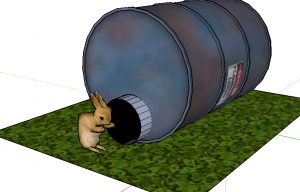That is Succession, the process of being successful or the pattern of being successful. The question is how do we get people on this planet to embody success and help spread it to their surrounding communities?
I, We, You
That’s a teaching model that is used in some of my lessons to teach children. In order for children to see how something can be used, we have to first model how the knowledge is applied, that is the “I.” Once the modeling is done, “We” work together on an example together. Finally, I allow the students to work on their own, the “You.”
This same model is a good representation of how we can pattern success in other people. It’s one way to set an example for others in order for them to do something for themselves, on their own, and eventually for others.
Meta- I, We, You
To take things a step further, the same set of principles can now be applied so that they too can begin to teach others the same principles so that their success can be leveraged to do the same for others. This is where the “You” becomes the “I.” Once this is accomplished, succession is done. People are now in the stage of spreading the idea and reality in other people.
The question now is what are the steps and processes that allow for success to work within an individual and how can it be reproduced in others. To do this, we look to Nature.
A Pattern in Nature to Mankind
To pattern success, we can look to reproduction and redundancy in our natural systems. Nature has set in motion a way for ideas and material items to reproduce exponentially under the right conditions. As human beings, we can dissect those patterns to gain some insight on how Nature reproduces so we can aide in the redundancy of abundance. This mutualism creates an everlasting effect that can last forever. Reproduction comes from an organism successfully living to the stage of being able to reproduce to make more of its own kind. The reproduced organism will now redundantly live out to its best abilities a similar life of its parent so it can too one day reproduce and make more of its own kind to be more successful at doing things to reproduce; and the cycle continues.
For ourselves, it means that we have to first become successful, be conscious of the pattern that has allowed us to get to where we are and how we got there, teaching that pattern to others and walking them through the steps to get there, and finally testing others to see whether their knowledge has solidified and then reproducing that pattern into others.
Patterns to Details
There are many forms of success and it surely will taste different between various people. However, I believe it is safe to say that we all would like to live a fulfilling life, that’s the pattern. The details (in my opinion) are less important. To set this pattern into motion requires people to define what success is for themselves. We can call this step definition. It also entails determining what is not success and leads to the feeling of extinction. Next, we find small steps that bring us closer to that feeling of abundance and a transition away from scarcity. In other words we are moving from surviving to thriving.
As time progresses, the definition of the idea manifests the tangible reality. Furthermore, walking with other people eventually should turn into a journey with many people who are following each other. This idea is much like the picture of a snake eating its own tail. The people are not really following any one individual, but they are feeding off of the ideas and realities of everybody. At this point, the pattern is self-replicating.
These are just some thoughts on the idea of patterning success or succession in our lives. It’s what all those self-help books are for, but if the pattern is successful, we shouldn’t need anymore of those books since we can rely on each other instead. That’s all.

